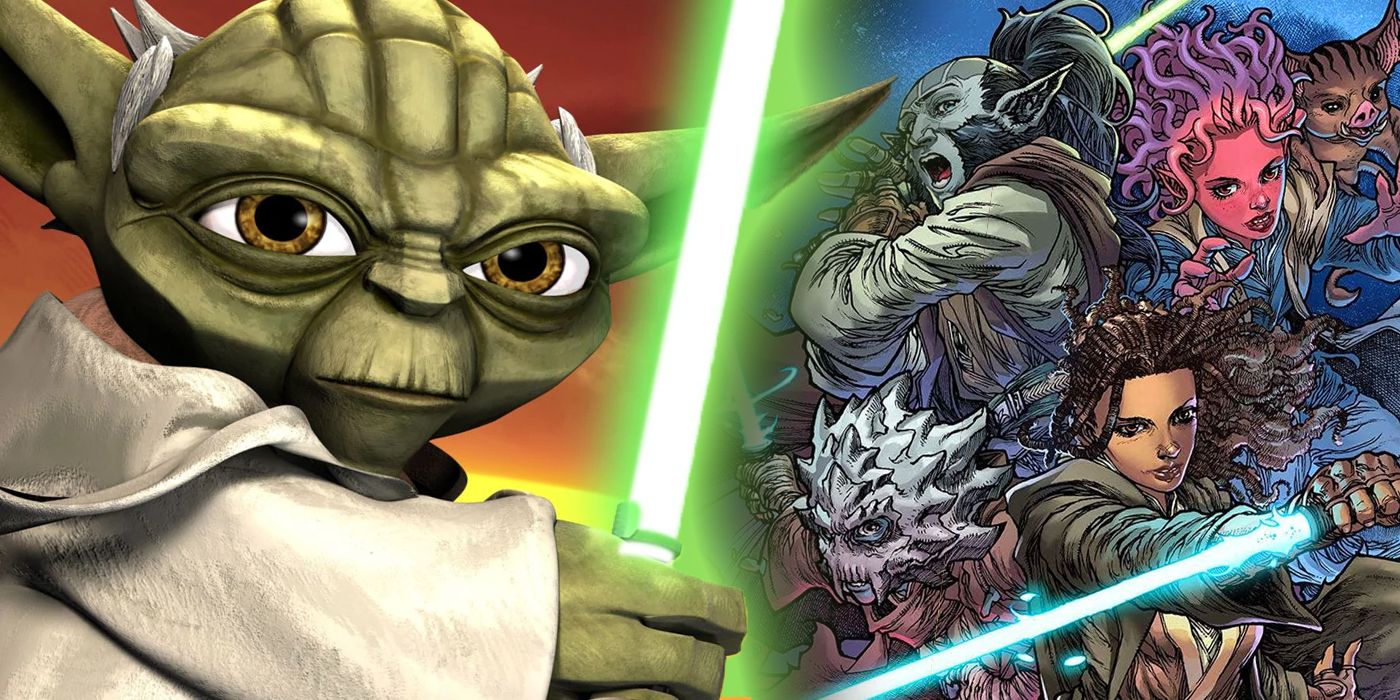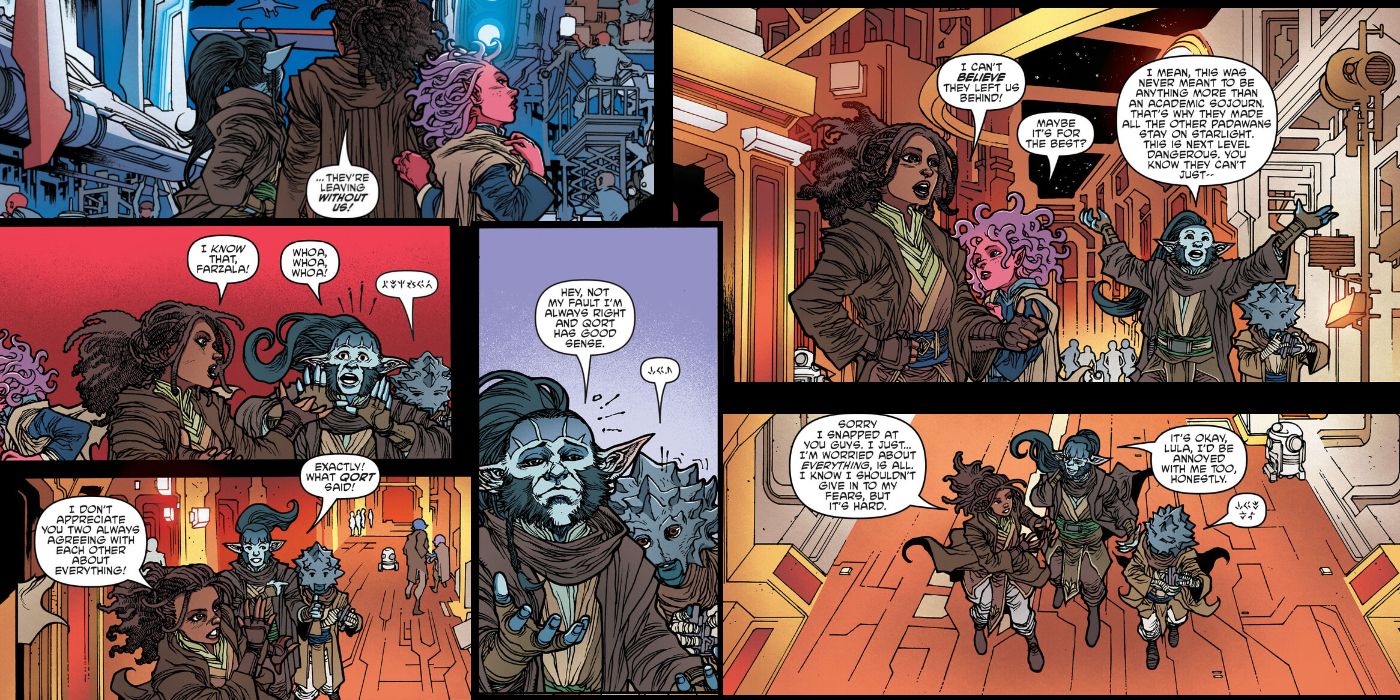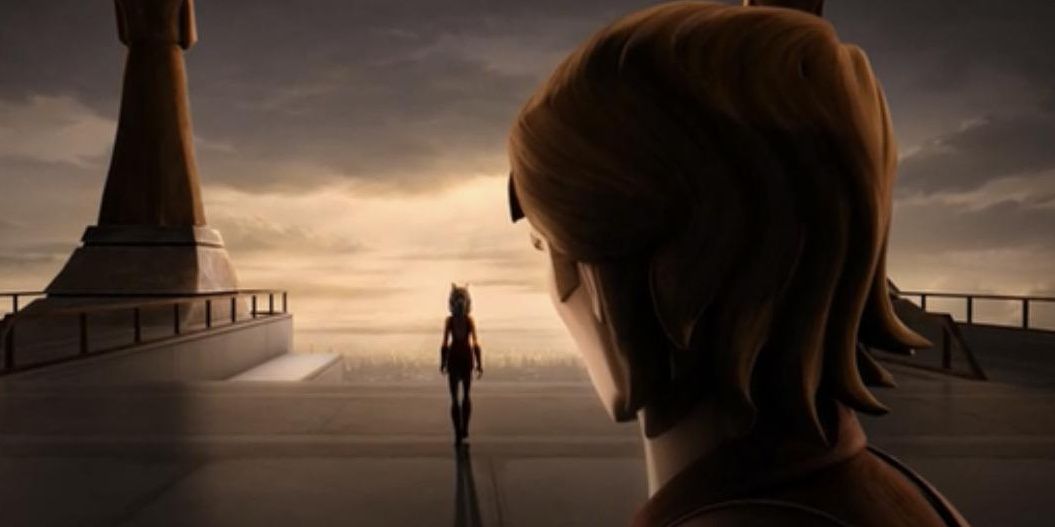
WARNING: This contains spoilers for Star Wars: The High Republic Adventures #4 by Daniel José Older, Harvey Tolibao, Pow Rodrix, Jake M. Wood, Rebecca Nalty, Elizabeth Brei and Riley Farmer, on sale now.
Throughout the Star Wars: The High Republic subseries thus far, the Jedi Masters and Knights of the Order have tried to keep the Padawans and Younglings away from major battles with the enemy. All of the major contact the younger Jedi have had with enemies has been mostly inadvertent. The latest issue of Star Wars: The High Republic Adventures confirms that the older Jedi are trying to protect the next generation and hope to avoid placing them in battle. This attitude shows a key difference between the High Republic Jedi and the Jedi Order during the Clone Wars. During the Clone Wars, the Jedi abandon this protectiveness and often place Padawans on the front lines, showing that the Order has fallen from the height of its glory during the High Republic.
In Star Wars: The High Republic Adventures #4, the Jedi Knights and Masters of the High Republic engage in a space battle with the Nihil. Padawan Lula Talisola is extremely disappointed that she is left behind, but Jedi Master Kantam Sy explains that the Padawans and Younglings have already been put into “too much danger.” At the end of the issue, Lula and her friends run off into danger to try to help their friend Zeen Mrala despite the Jedi Masters' best efforts to keep them safe, but their mission is in no way sanctioned by the older members of the Order.

This attitude is juxtaposed with the Nihil putting children into battle, continuing the comparison first begun in Star Wars: The High Republic Adventures #3. While Zeen Mrala and her new Padawan friends are safe aboard the Jedi Outpost at Ord Mantell, Zeen's friend Krix Kamerat is forced to take a blaster and fight. Krix also might be at the center of a trap laid by Marchion Ro for the Jedi, showing that the Nihil are far more ruthless in their use of children in their fight.
This treatment also contrasts sharply with the treatment of Padawans during the Clone Wars. Lula Talisola is around the same age as Ahsoka Tano, Barriss Offee and Caleb Dume, later known as Kanan Jarrus, when they were made Commanders in war, often fighting on the front lines. Barriss in particular is an excellent example of how much being forced to fight in a war at such a young age could affect a young Jedi. The war leads Barriss to become disillusioned with the Order and fall to the Dark Side.

At the beginning of Star Wars: The Clone Wars, Ahsoka is enthusiastic about her role in the war effort and seeks to prove herself. However, by the final arc, she begins to recognize the toll the fighting has taken on her, and false accusations against her lead her to question the order. In "Shattered," the penultimate episode of the series, Ahsoka reflects on her role in the war once peace seems imminent. She states, "As a Jedi, we were trained to be keepers of the peace, not soldiers. But all I've been since I was a Padawan is a soldier." With this statement, Ahsoka shows how the Jedi have fallen away from their intended role due to their actions during the Clone War, and a significant part of this fall is their use of Padawans as child commanders in the fight.
Thus, the Jedi of the High Republic are far less likely to add the young Padawans and Younglings to their armies than their descendants. This reluctance to endanger the children of the Order is another example of how the High Republic era represents the Jedi at their best, though that admittedly is not the highest bar to clear. The Jedi Order's decision to use children in battle during the Clone Wars shows the Order's decline and ultimately scarred the young Padawans long before Order 66 went into effect.
0 Comments